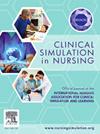Comparing virtual reality and live standardized patient drill simulation-based triage training methods in terms of triage knowledge and performance
IF 2.5
3区 医学
Q1 NURSING
引用次数: 0
Abstract
Background
Several methods have been developed to increase the efficiency of triaging the victims of mass casualty incident (MCI). In teaching MCI that use mock patients, such as standardized patients (SPs), the live disaster drill is considered as primary teaching tool. However, this teaching method is expensive and requires a lot of resources. Virtual reality (VR) is a valuable evolving tool for teaching and testing mass casualty triage.
Aim
The aims of this study were to compare VR disaster drill with live disaster drill using SPs in terms of triage knowledge and performance for Jordanian paramedic students.
Method
A randomized controlled parallel design was used. The sample comprised 102 selected students of the Paramedic Diploma program at Amman’s Civil Defense College. A convenience sampling method was used to select participants and a simple random assignment was used to distribute participants into the study arms (VR vs. SPs). Triage knowledge was measured at baseline and two weeks after the intervention. Triage performance was measured during the disaster drills.
Results
Paired t-tests showed that there was a statistically significant increase in the triage knowledge between the pretest and post-test in VR and SP groups. The independent t-test revealed that there were no statistically significant differences in the mean knowledge and triage performance scores between the SP and VR groups.
Conclusion
VR-based training demonstrated noninferior outcomes compared to SP drills, supporting its utility as a complementary triage education tool when live simulations are logistically constrained.
比较基于虚拟现实和现场标准化病人演练模拟的分诊训练方法在分诊知识和性能方面的差异
为了提高大规模伤亡事件(MCI)受害者的分类效率,已经开发了几种方法。在使用模拟病人(如标准化病人)的MCI教学中,现场灾难演练被认为是主要的教学工具。然而,这种教学方法是昂贵的,需要大量的资源。虚拟现实(VR)是一种有价值的发展工具,用于教学和测试大规模伤亡分类。目的本研究的目的是比较VR灾难演习与现场灾难演习使用sp在分诊知识和性能方面的约旦护理学生。方法采用随机对照平行设计。样本包括安曼民防学院护理文凭课程的102名学生。采用方便抽样方法选择参与者,并采用简单随机分配方法将参与者分配到研究组(VR vs. SPs)。在基线和干预后两周测量分诊知识。在灾难演习期间测量了分诊性能。结果西班牙t检验显示,VR组和SP组的分诊知识在测试前和测试后的差异有统计学意义。独立t检验显示,SP组和VR组的平均知识和分诊表现得分无统计学差异。结论:与SP训练相比,基于vr的训练效果并不差,在现场模拟受到后勤限制时,它可以作为一种补充的分诊教育工具。
本文章由计算机程序翻译,如有差异,请以英文原文为准。
求助全文
约1分钟内获得全文
求助全文
来源期刊

Clinical Simulation in Nursing
NURSING-
CiteScore
5.50
自引率
15.40%
发文量
107
期刊介绍:
Clinical Simulation in Nursing is an international, peer reviewed journal published online monthly. Clinical Simulation in Nursing is the official journal of the International Nursing Association for Clinical Simulation & Learning (INACSL) and reflects its mission to advance the science of healthcare simulation.
We will review and accept articles from other health provider disciplines, if they are determined to be of interest to our readership. The journal accepts manuscripts meeting one or more of the following criteria:
Research articles and literature reviews (e.g. systematic, scoping, umbrella, integrative, etc.) about simulation
Innovative teaching/learning strategies using simulation
Articles updating guidelines, regulations, and legislative policies that impact simulation
Leadership for simulation
Simulation operations
Clinical and academic uses of simulation.
 求助内容:
求助内容: 应助结果提醒方式:
应助结果提醒方式:


